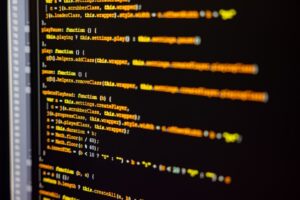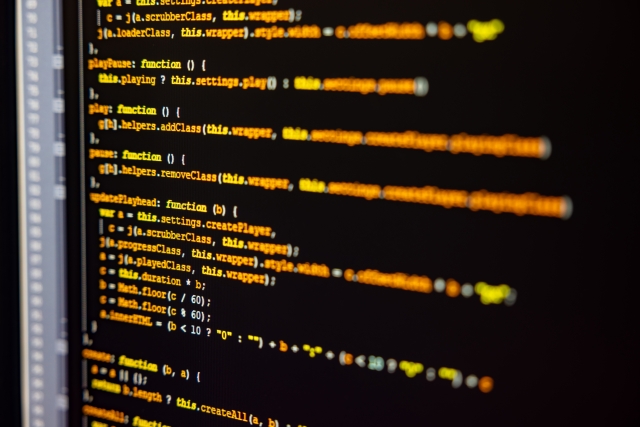要約
Pythonがビジネスに有用であることは広く知られていますが、実際にどのように活用されているか気になる方も多いと思います。
そこで今回は、Pythonを実際にビジネスに活用した海外企業の例を紹介し、その活用方法もコードを交えて解説していきます。
Pythonをビジネスに活用したい方や、活用方法に興味を持っている方は必見です。
詳細内容

Pythonを実際にビジネスに活用した海外企業の例として、以下の3つを紹介します。
## 1. Netflix### 活用方法Netflixは、Pythonをデータ分析や機械学習に活用しています。
具体的には、以下のような取り組みを行っています。
– 映画の視聴データを分析し、ユーザーにオススメの作品を提供するアルゴリズムの開発
– ユーザーがどのようなデバイスや環境で映画を視聴しているかを分析し、サービスの最適化### コード例以下は、Netflixが公開しているPythonライブラリ「surprise」を使った映画の評価予測のコード例です。
このコードは、協調フィルタリング(Collaborative Filtering)と呼ばれる手法を用いて、ユーザーの映画評価から他のユーザーとの類似性を計算し、それを元に未視聴の映画の評価を予測するものです。
“`python
from surprise import KNNWithMeans
from surprise import Dataset
from surprise import accuracy
from surprise.model_selection import train_test_split
# Load the movielens-100k dataset
data = Dataset.load_builtin(‘ml-100k’)
# Now let’s train the algorithm on the dataset.
trainset, testset = train_test_split(data, test_size=.15)
# We’ll use the KNN algorithm.
algo = KNNWithMeans()
# Train the algorithm on the trainset, and predict ratings for the testset
algo.fit(trainset)
predictions = algo.test(testset)
# Then compute RMSE
accuracy.rmse(predictions)
“`このコードを実行することで、映画の評価に基づいて、他のユーザーとの類似性を計算し、未視聴の映画の評価を予測することができます。
## 2. Google### 活用方法Googleは、Pythonをさまざまな分野で活用しています。
具体的には、以下のような取り組みを行っています。
– Google検索エンジンの開発
– Googleアナリティクスのデータ分析
– 自然言語処理(NLP)の研究### コード例以下は、Googleが開発しているTensorFlowライブラリを使った画像分類のコード例です。
このコードは、Convolutional Neural Network(CNN)と呼ばれる機械学習の手法を用いて、画像の分類を行うものです。
“`python
import tensorflow as tf
import numpy as np
import os
# Load the data
train_data, train_labels = load_data(‘train’)
test_data, test_labels = load_data(‘test’)
# Define the model
model = tf.keras.Sequential([
tf.keras.layers.Conv2D(32, (3,3), activation=’relu’, input_shape=(32, 32, 3)),
tf.keras.layers.MaxPooling2D(2,2),
tf.keras.layers.Conv2D(64, (3,3), activation=’relu’),
tf.keras.layers.MaxPooling2D(2,2),
tf.keras.layers.Flatten(),
tf.keras.layers.Dense(128, activation=’relu’),
tf.keras.layers.Dense(10, activation=’softmax’)
])
# Compile the model
model.compile(optimizer=’adam’,
loss=’categorical_crossentropy’,
metrics=[‘accuracy’])
# Train the model
model.fit(train_data, train_labels, epochs=10)
# Evaluate the model on the test data
test_loss, test_acc = model.evaluate(test_data, test_labels)
print(‘Test accuracy:’, test_acc)
“`このコードを実行することで、画像分類のモデルを作成し、訓練データおよびテストデータでの精度を評価することができます。
## 3. Airbnb### 活用方法Airbnbは、Pythonをデータ分析や機械学習、ビジネスロジックの実装に活用しています。
具体的には、以下のような取り組みを行っています。
– ユーザーのレビューから、宿泊施設の品質を分析し、改善につなげる
– ユーザーの行動データから、宿泊施設の価格設定を自動化する
– 宿泊施設の予約システムを実装する### コード例以下は、Airbnbが公開しているPythonライブラリ「airflow」を使ったバッチ処理のコード例です。
このコードは、特定の時間に自動で実行されるバッチ処理を実装するものです。
具体的には、データベースからデータを抽出し、そのデータを処理する処理を定義しています。
“`python
from airflow import DAG
from airflow.operators.python_operator import PythonOperator
from datetime import datetime, timedelta
# Define the DAG
default_args = {
‘owner’: ‘airflow’,
‘depends_on_past’: False,
‘start_date’: datetime(2021, 1, 1),
’email’: [‘airflow@example.com’],
’email_on_failure’: False,
’email_on_retry’: False,
‘retries’: 1,
‘retry_delay’: timedelta(minutes=5)
}
dag = DAG(‘my_dag’, default_args=default_args, schedule_interval=timedelta(days=1))
# Define the tasks
def extract_and_process_data():
# Extract data from the database
data = extract_data()
# Process the data
processed_data = process_data(data)
# Save the processed data to a file
save_data_to_file(processed_data)
t1 = PythonOperator(task_id=’extract_and_process_data’, python_callable=extract_and_process_data, dag=dag)
t2 = BashOperator(task_id=’generate_report’, bash_command=’generate_report.sh’, dag=dag)
# Set the task dependencies
t2.set_upstream(t1)
“`このコードを実行することで、定期的にバッチ処理が実行され、データベースからデータを抽出し、そのデータを処理する処理が自動で実行されるようになります。


コメント